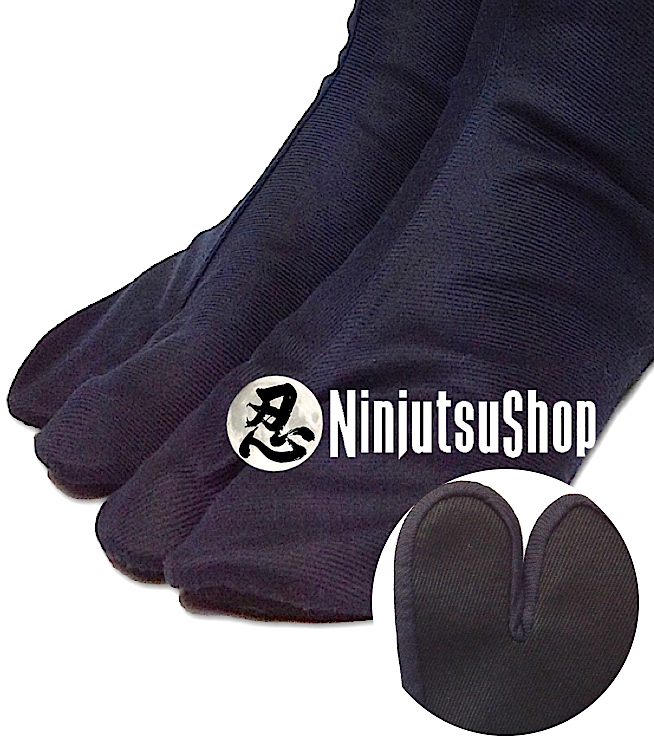
To know all about Ninja Tabi Socks
- On 12/04/2023
- In Tabi
- 0 comments
Ninja Tabi - All About Ninja Tabi Socks
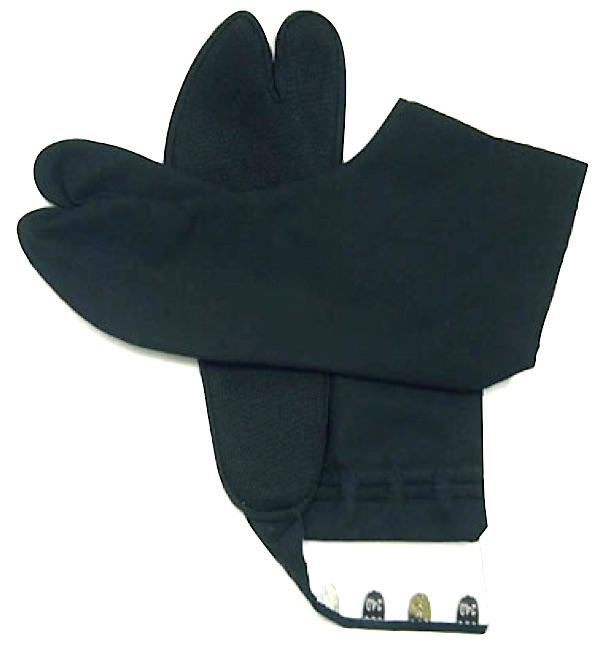 The word "足袋" (tabi) is a combination of two kanji characters: "足" and "袋".
The word "足袋" (tabi) is a combination of two kanji characters: "足" and "袋".
足 (Ashi): This kanji means "foot" or "leg." It is used in various contexts related to feet, walking, or legs.
袋 (Fukuro): This kanji means "bag" or "pocket." It refers to something that can contain or enclose objects.
Together, "足袋" (tabi) literally translates to "foot bag," referring to the traditional Japanese socks or footwear with a separated toe that cover and protect the feet, similar to a bag or pocket.
Historically, tabi were essential items worn by people of various social classes in Japan, designed to provide both comfort and practicality. The separated toe design allowed for better stability and agility, making them particularly suitable for activities such as martial arts, including ninjutsu, as well as everyday tasks.
Traditional Stealthy and Functional Socks
Tabi were once essential attire for nobles, samurai warriors, and medieval Japanese ninjas. Designed for stealth, they were often dark in color (khaki, midnight blue, ochre, black) to blend into the darkness. Minimalist in design, encompassing the entire foot, these socks offered comfort and functionality. Their thin soles allowed for silent walking, while their excellent grip made them ideal for slippery surfaces.
Ninja Tabi Socks
To know about Tabi Ninja socks.
 About Japanese Tabi Socks:
About Japanese Tabi Socks:
Japanese Tabi socks are a variety of traditional Japanese socks that are characterized by their division between the big toe and the other toes. They have a long history in Japan, dating back centuries. Tabi were originally worn with the traditional Japanese sandals called Zori or Geta.
The Tabi have a distinct shape that separates the big toe from the other toes, which allows for better grip when walking, especially on slippery surfaces like wood and tatami. Tabi socks are often made of cotton or silk, and can come in different colors and patterns.
Tabi are still popular in Japan, especially for formal occasions such as tea ceremonies, festivals, and weddings. They are also used in Japanese martial arts, such as judo, kendo and aikido.
Tabi are also used for health care, especially for people with circulatory diseases or cold feet. Tabi socks can help stimulate blood circulation and keep feet warm.
Tabi socks can be made from different materials, but the most common are cotton and silk. Cotton is the most popular material for Tabi as it is soft, breathable and easy to care for. Tabi cotton socks can be worn all year round and are ideal for everyday activities. Silk is also a common option for Tabi, especially for formal occasions or for people who have sensitive feet. Tabi silk socks are soft, lightweight and feel great against the skin. They are often worn for tea ceremonies and special occasions. Apart from cotton and silk, Tabi can also be made from other materials such as linen, wool or synthetic fibers to meet specific needs such as warmth, durability or protection against heat. 'humidity.
NINJA TABI
- Ninja Tabi Socks are a variety of Tabi shoes worn by ninjas, Japanese stealth warriors of medieval times.
 The Ninja Tabi Socks were designed to provide both comfort and functionality during guerrilla and reconnaissance missions.
The Ninja Tabi Socks were designed to provide both comfort and functionality during guerrilla and reconnaissance missions.- The Ninja Tabi Socks were often black or dark colored to blend in with the darkness.
- They were also made with thin, flexible soles to allow better ground feel, allowing ninjas to move silently.
- The Ninja Tabi Socks were also designed to provide excellent grip on a variety of surfaces, including slippery surfaces like rock and wood.
- The Ninja Tabi Socks were often worn with canvas gaiters to provide additional foot and ankle protection on missions.
- Gaiters were often secured to the leg with cords or straps to hold the feet in place during rapid movements.
- Today, the Ninja Tabi Socks have become popular in Japanese popular culture, especially in martial arts and streetwear fashion. Modern Tabi can be found in a variety of styles and colors, and are often worn with traditional outfits or sportswear.
How to Choose Your Pair of Tabi for Ninjutsu Practice?
As mentioned above, for ninjas, the stealthy warriors of feudal Japan, tabi were not just simple socks.
These traditional shoes with a separated big toe were real secret weapons, providing agility, grip, and supreme discretion during their perilous missions. Today, the discipline of ninjutsu, the martial art inherited from the ninjas, continues this tradition by placing great importance on the choice of tabi. To excel in this demanding art, which requires complete mastery of body and mind, it is crucial to choose the best-suited tabi.
Here are the essential criteria to consider to find the perfect pair that will open the doors to this fascinating world.
Type of Practice:
- Indoor Practice: For dojo practice, black tabi made of cotton, tetron, or polyester with a thin white or black sole and 3 or 5 brass kohaze fasteners or velcro straps are recommended. This sleek and technical model offers optimal freedom on tatami mats.
- Outdoor Practice: For outdoor practice, you can opt for the modern jikatabi (available in the shop) or traditional tabi with a black cotton or polyester base, complemented by waraji sandals made from igusa rice straw. This traditional footwear, typical of ninjas, combined with your tabi, forms an ideal set for navigating various terrains with excellent traction.
Materials:
The choice of materials composing your tabi is essential to ensure both comfort, breathability, and optimal durability. Cotton, widely used in traditional tabi, is excellent for its softness and ability to wick away sweat during exertion.
Polyester, on the other hand, offers unmatched strength, indispensable for intensive sessions. The ideal often lies in mixed models, where the cotton upper ensures maximum breathability, while the reinforced polyester sole allows you to wear your tabi for the long term without fearing wear and tear.
- Sole Style: For dojo sessions, a thin white or black sarashi sole will be perfect. With an ideal thickness, it allows you to maintain excellent ground feel, perfect for learning stealth movements.
 Conversely, outdoor practice requires more grip. Paired with sturdy woven waraji sandals, opt for thick sarashi or neru soles in cotton or synthetic fibers that will protect you from shocks and provide excellent grip on rough trails.
Conversely, outdoor practice requires more grip. Paired with sturdy woven waraji sandals, opt for thick sarashi or neru soles in cotton or synthetic fibers that will protect you from shocks and provide excellent grip on rough trails.
- Reinforcements: In intensive ninjutsu practice, tabi undergo significant friction that can quickly wear them out. Reinforcements placed in the right spots will be your best allies in extending their lifespan.
- Traditionally, ninjas reinforced the most stressed areas, like toes and heels, with pieces of tanned leather or particularly dense fibers. Today, these inserts can be made of rubber, technical plastic, or other highly abrasion-resistant synthetic materials.
- The more pronounced the reinforcement, the more protected your tabi will be... but also slightly less flexible. It’s up to you to evaluate your needs based on the intensity of your practice. For beginners, a few discreet patches will suffice. Experts will opt for ultra-reinforced models.
- Fit: A perfect fit is the key to safe practice. Too tight, the tabi will restrict your mobility and cause painful friction. Too loose, and your feet will move uncontrollably within the shoe.
- The right reflex: always take your measurements before purchasing, preferably at the end of the day when your feet are slightly swollen. Follow the size guides provided closely, remembering that tabi tend to loosen over time.
- In terms of fastening system, traditional brass kohaze will ensure robust support whether you are indoors or in nature. Their elastic straps will hug the shape of your ankles for optimal tabi lock.
- Style and Color: To stay in the purest ninja tradition, the reference color remains absolute black. Perfect for blending into the darkness, black tabi will allow you to achieve ultimate discretion, both in the dojo and on the trails.
The choice of materials will also add an authentic touch. The matte black cotton or polyester tabi, paired with igusa rice straw waraji, will form a set that is both old-fashioned chic and incredibly effective.
Whether you are beginning the fascinating discipline of ninjutsu or are a seasoned expert, the choice of tabi (and accessories) is crucial for practicing with peace of mind.
From the sleek pair for stationary work in the dojo, to the ultra-functional tabi/waraji set for traversing nature, all combinations are possible. It’s up to you to determine which one will best suit your level and goals, without ever losing sight of the respect for the centuries-old traditions that have shaped the art of ninjas.
So don’t wait any longer and equip yourself to step fully into the unique world of ninjutsu! With your feet firmly on the ground thanks to carefully chosen equipment, nothing will hinder your progress on the path to ninja mastery.
The Use of Tabi by Ninjas
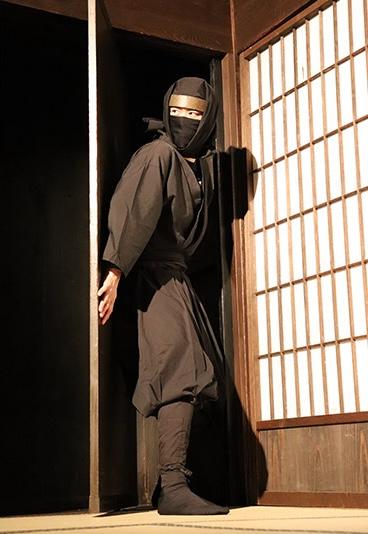 In What Contexts/Missions Did Ninjas Wear Tabi?
In What Contexts/Missions Did Ninjas Wear Tabi?
- Guerrilla and Reconnaissance Missions: Tabi were ideal for these types of missions due to their discretion (dark colors), flexibility that allowed for silent movement, and grip on various surfaces.
- Infiltration and Camouflage: Black tabi blended into the darkness and allowed ninjas to go unnoticed at night. Their thinness and lack of noise when walking facilitated infiltration.
- Climbing and Acrobatic Movements: The separation for the big toe and non-slip soles provided excellent ground grip, essential for climbing, jumping between rooftops, or other perilous ninja movements.
- Close-Combat: During hand-to-hand combat, tabi allowed for optimal freedom of movement and agility due to their flexibility and lightness.
Thus, whether for discretion, mobility, or grip, tabi were key footwear for numerous ninja missions requiring stealth and agility.
What Advantages Did Tabi Provide for the Practice of Ninjutsu, Ninpo, and Stealth?
Tabi provided several key advantages to ninjas in the practice of ninjutsu, ninpō (the ninja martial art), and for their stealth:
Silent Movement
- The thin, flexible soles of tabi made virtually no noise during movement, allowing for great discretion.
- This was essential for infiltration, moving stealthily, and surprising the enemy.
Agility and Mobility
- The separation for the big toe allowed excellent flexibility and freedom of movement for the feet.
- Ideal for climbing techniques, jumping, and the acrobatic movements of ninpō.
- Ninjas could move with great agility during combat.
Optimal Grip
- The flexible soles conformed to uneven surfaces for maximum traction.
- Essential for moving safely on rooftops, slippery surfaces, etc.
- Good grip was crucial for martial arts techniques.
Visual Discretion
- The dark color (often black) of tabi made them more discreet at night.
- They did not reflect light, an advantage for camouflage.
- Thus, through their minimalist but ingenious design, tabi allowed ninjas to combine stealth, agility, and safety in their movements and the execution of ninjutsu techniques.
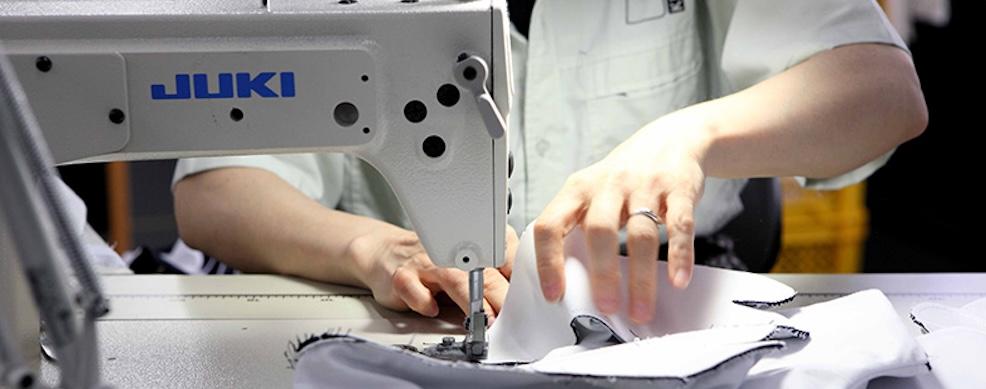 What Are the Different Styles & Designs of Ninja Tabi?
What Are the Different Styles & Designs of Ninja Tabi?
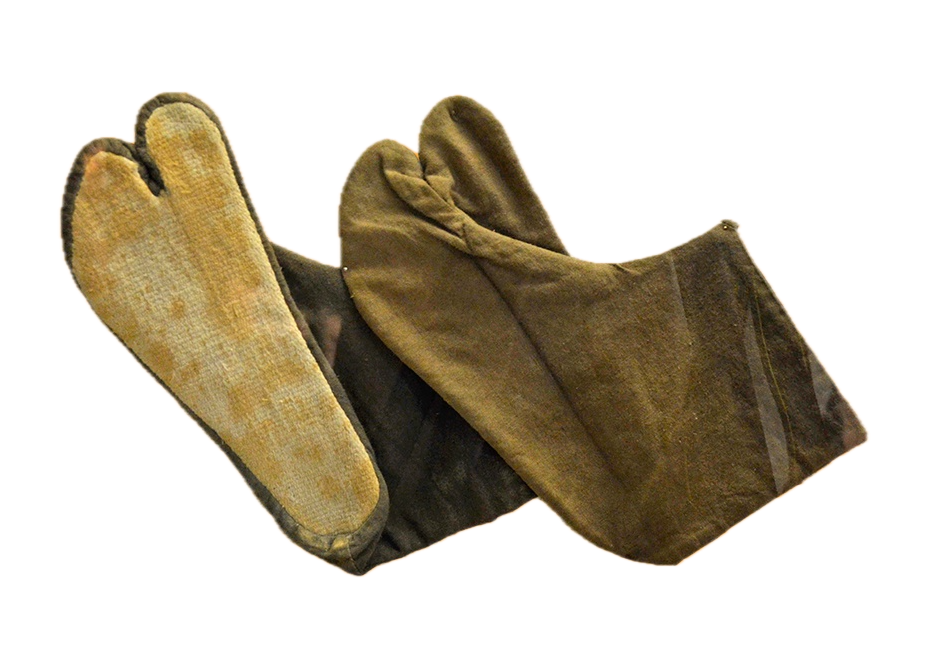 Models by Ninja Clans:
Models by Ninja Clans:
- The main ninja clans often had their own distinctive tabi style, sometimes even coded.
- For example, the tabi of the Iga clan were renowned for their high quality and refined details.
- The Kōga clan favored more rustic and functional tabi for their outdoor missions.
- Some clans added specific patterns or colors to their tabi as a sign of recognition.
Regional Variations:
- Tabi styles could vary between mountainous, rural, or urban regions.
- In mountainous areas, the soles were thicker and reinforced to adapt to rugged terrain.
- In rural areas, simpler and sturdier tabi were used for fieldwork.
- Urban tabi were often more elegant and ornamented in their finish.
Specific Details of Ninja Tabi:
- Very dark colors (black, dark gray) for nighttime camouflage.
- Extremely thin, flexible, and non-slip soles for perfect discretion.
- Inner linings of vegetable fibers to absorb sweat.
- Discreet fastening system (thin laces, ribbons) for secure adjustment.
- Some had leather reinforcements at the toes and heels for greater durability.
- So, while the base remained the same (canvas, separated big toe), ninja tabi exhibited numerous regional and clan variations, with a very sleek and optimized design for stealth missions.
TO KNOW MORE :
Specific Details of traditional Japanese Ninja Uniform (Shinobi Shozoku)
-
 1. Uwagi (上衣)
1. Uwagi (上衣)Description: The gi is the basic jacket of the uniform, typically made from durable, lightweight, and flexible fabric.
Features: The gi has a wrap-around design with ties to secure it, allowing for a snug fit that does not impede movement.
2. TatasukeBakama / Ninja Hakama (忍者袴)
Description: These are wide-legged pants traditionally worn by samurai and ninjas alike.
Features: The hakama are pleated and designed to allow freedom of movement, essential for stealth and agility. They are often tied with a series of straps to ensure they stay in place during rigorous activities.
3. Kyahan (脚絆)
Description: These are leg wraps or gaiters that cover the shins and calves.
Features: Kyahan protect the lower legs from brush and brambles, and also help to keep the hakama in place.
4. Tabi (足袋)
Description: Traditional split-toe socks that separate the big toe from the rest of the toes.
Features: Tabi are typically worn with jikatabi, traditional Japanese footwear, to provide better grip and flexibility.
5. Jikatabi (地下足袋)
Description: Modern Outdoor footwear with split toes, often resembling boots.
Features: Jikatabi have rubber soles that offer excellent traction and are designed for silent movement.
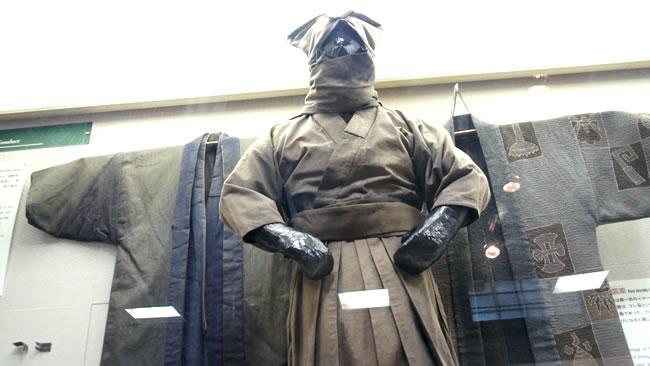 6. Tekko (手甲)
6. Tekko (手甲)Description: Arm and hand guards that cover the wrists and lower arms.
Features: Tekko provide protection and can help reduce noise when moving through brush or when in close combat.
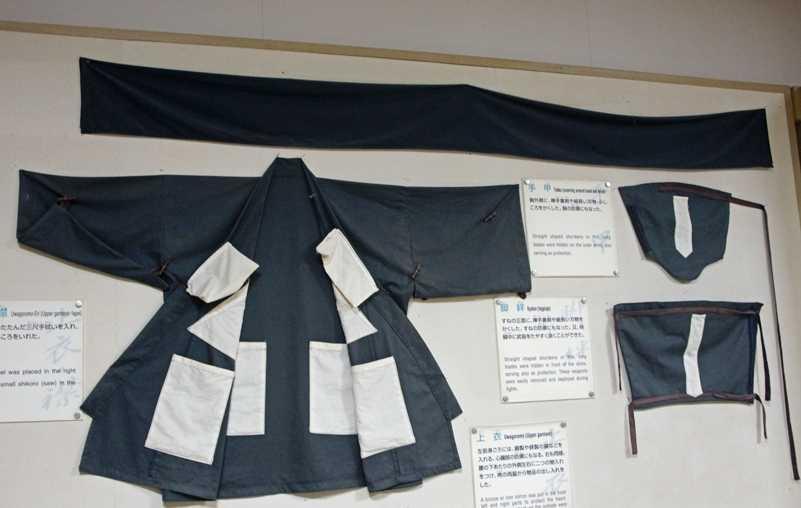 7. Kakute (角手)
7. Kakute (角手)Description: Iron rings with spikes that ninjas sometimes wore on their fingers.
Features: Kakute could be used for climbing or as a weapon in close combat.
8. Hachimaki (鉢巻)
Description: A headband that is worn to keep sweat and hair out of the face.
Features: The hachimaki often has symbolic meanings and can signify the ninja's resolve and focus.
9. Menpo (面頬)
Description: A mask or face covering that conceals the identity of the ninja.
Features: The menpo can range from simple cloth masks to more elaborate pieces that also offer some protection to the face.
10. Sageo (下緒)
Description: A cord or strap used to secure various tools and weapons.
Features: The sageo is versatile and can be used to tie down equipment, making it easily accessible while ensuring it does not rattle or make noise.
11. Kaginawa (鉤縄)
Description: A grappling hook and rope.
Features: While not part of the clothing itself, the kaginawa was often carried by ninjas for climbing and scaling obstacles.
12. Utility Sashes
Description: Sashes or belts used to carry weapons and tools.
Features: These sashes would securely hold items like shuriken (throwing stars), kunai (throwing knives), and other small weapons.
Additional Notes
Color: Although often depicted as black, historical records suggest that ninjas also wore dark blue, brown, and even dark red to better blend into different environments, such as forests or urban settings.
Materials: The materials used were typically natural fibers like cotton or hemp, chosen for their durability and comfort.
The shinobi shozoku was designed with practicality and functionality in mind, enabling the ninja to move stealthily, protect themselves from the elements and enemies, and carry their essential tools and weapons.
ninja tabi ninja tabi socks ninja socks
Add a comment


